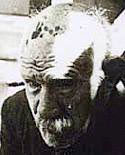I first saw one of Henry Darger's paintings at a group show at the American Visionary Art Museum and was stunned by the color and composition of the work as well as the heartbreaking story that accompanied it. Since then, I've kept a keen lookout for opportunities to see more of his work. No matter how much I see, I'm always enthralled anew.
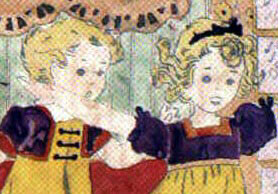
Appreciation of the art of Henry Darger is unequivocally influenced by the known facts of his life: his mother died when he was four years old after giving birth to a baby sister, whom he never saw. When he was eight years old, his father, unable to continue caring for him, put him in an orphanage and died soon after. Diagnosed as a disruptive trouble-maker, he was removed to various mental institutions until he ran away at age 16.
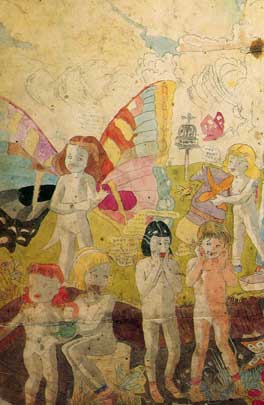
For the next sixty-four years, he lived a reclusive life, working as a janitor in Chicago area hospitals and going to Catholic Mass daily. Neighbors would see him going through the trash, picking out magazines and newpaper illustrations. Finally, at age 80, unable to climb the stairs to his rented room, he was moved to a nursing home and died shortly thereafter.
His landlord was cleaning out his room after his death and came across a startling discovery: alone in his room, Darger had created a beautiful and violent fantasy world, primarily embodied in a 15,000 page epic narrative, "The Story of the Vivian Girls, in What is known as the Realms of the Unreal, of the Glandeco-Angelinnian War Storm, Caused by the Child Slave Rebellion."
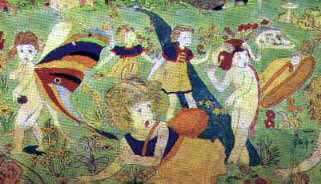
Illustrated by several hundred large watercolors paintings as well as smaller drawings and collages, the Vivian Girls are seven preadolescent sisters, princesses, sometimes depicted as hermaphrodites, who fight against and ultimately prevail over evil deeds prepetrated by sadistic adults. They are aided in their battles by various Christian armies and also by Blengins, dragon-like animals, both fearsome and gentle, that are absolute protectors of children. The illustrations range from calm and pastoral to brutally violent.
Darger was apparently not satisfied with his ability to draw the human form, so he used tracings of figures from newspapers, comic books and magazine photographs to illustrate his heroines, compiling a gestural dictionary that he used over and over.
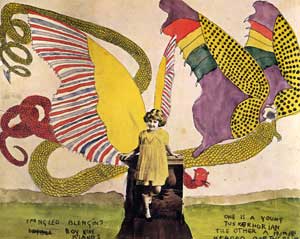 There is an otherworldliness in this combination of comic-book-like
characters set against lush, panoramic backgrounds and huge cloud formations (he
was also an obsessive weather buff). The sexual undertones of the work itself
and the voyeurism inherent in viewing work that the artist never meant to be
shown furthers the unsettling nature of the work.
There is an otherworldliness in this combination of comic-book-like
characters set against lush, panoramic backgrounds and huge cloud formations (he
was also an obsessive weather buff). The sexual undertones of the work itself
and the voyeurism inherent in viewing work that the artist never meant to be
shown furthers the unsettling nature of the work.
The Henry Darger Center is a not-for-profit foundation created in 1997 that offers art classes and programs to people with mental illnesses and provides exhibitions of their work. For more information or to offer your support, contact The Nathan and Kiyoko Lerner Foundation, 849 W. Webster, Chicago, IL 60614, USA.
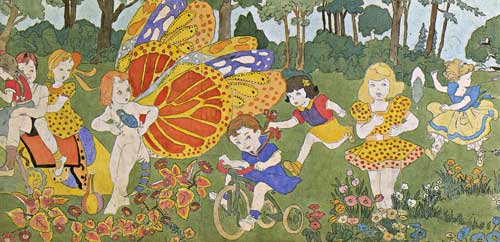

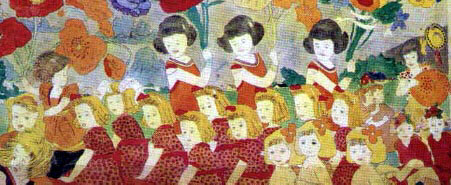
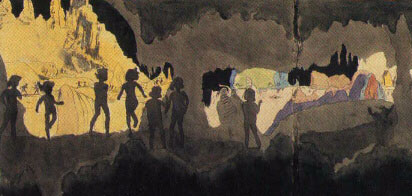
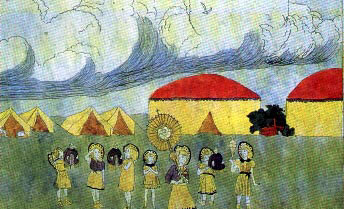
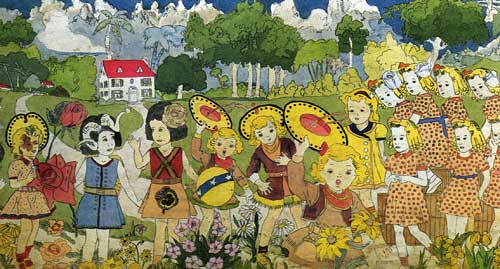
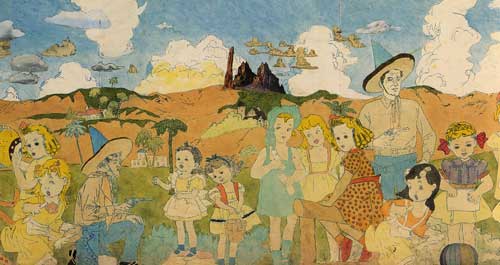
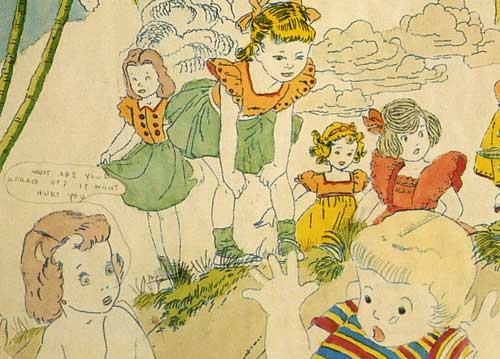
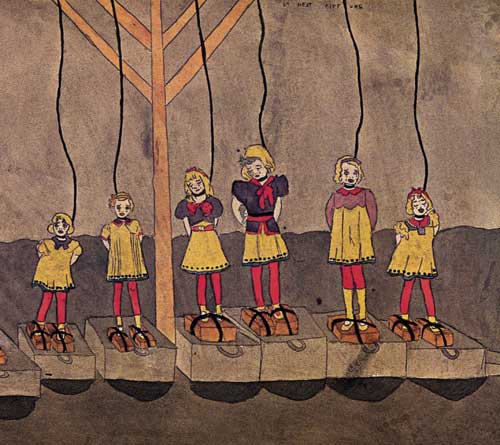
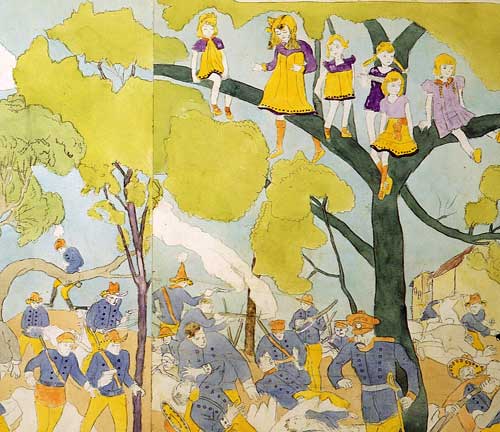
The Andrew Edlin Gallery is the exclusive representative of the Henry Darger Estate. They are in the process of preparing a catalogue raisonné of his work.
POV's interactive tour of Darger works.
Village Voice article on Darger and scholar John MacGregor.
ArtScope.net article on Henry Darger by G. Jurek Polansk.
The Carl Hammer Gallery website features many works.
Salon article on Darger by Gavin McNett.
The American Folk Art Museum has just negotiated a sizable Darger acquisition, including almost all of the manuscripts and a number of paintings.
Intuit: The Center for Intuitive and Ousider Art.
American Visionary Art Museum: Year-long group shows by outsider artists.
Raw Vision Magazine's definition of outsider art.
